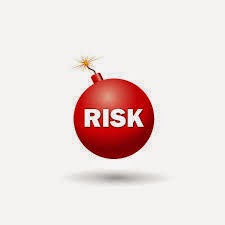NOTE : IT IS RECOMMENDED THAT ONE SHOULD READ THESE POINTS IN DETAIL FROM THE BOOKS (which ever interests you more) AND ONLY AFTER YOU HAVE FINISHED A THOROUGH READING, YOU CAN GO THROUGH THESE POINTS FOR CONSOLIDATION.
RISK
EVERYONE should be involved in Risk Identification
- RISK MANAGEMENT : Increase the probability and impact of opportunities and decrease the probability and impact of threats.
We will talk more about the opportunities and threats later in this post
- RISK REGISTER :
- List of risks
- List of potential responses
- Root cause of risks
- RISK APPETITE : High level description of the acceptable level of risk.
- RISK TOLERANCE : More specific, measurable amount of acceptable risk.
- RISK THRESHOLD : One specific point where risk becomes unacceptable.
Risk appetite, Risk tolerance and Risk Threshold are part of EEF.
- RISK AVERSE : Someone who does not want to take risk.
- RISK FACTORS :
- Probability (how likely)
- Impact (range, amount at stake)
- When (expected time)
- How often (frequency)
- RISK CATEGORIES (Sources Of Risk) : External, Internal, Technical, Unforeseeable etc.
- BUSINESS RISKS : Risk of a gain or loss. you take a risk. If it worked you get profit if it fails you are in loss
- PURE (INSURABLE) RISKS : Only a risk of loss. e.g. theft fire.
- UNCERTAINTY : Lack of knowledge about an event reduces confidence in conclusions.
- WORK AROUND : Unknown risk event occurs. Something you did not know and you have not planned, then you do work around.
Unplanned responses to deal with unanticipated events or problems
- QUALITATIVE RISK ANALYSIS : Subjective evaluation. no numbers included. you can use this for
- Comparing the risk of the project to the overall risk of the other projects.
- To decide if the project should be terminated or continued.
- RISK DATA QUALIY ASSESSMENT : The data/ information you have collected about the risk, how accurate/ well understood is that.
- WATCH LIST : Risks with low probability and low impact. Non critical risks. Document them and revisit and analyze them time and again as the project progresses.
- DECISION TREE : When to use
- If you have to use between many alternatives e.g. which option should i choose or how will i solve this problem.
- In more complex situations.
- It takes future evens in making the decision today.
- It can evaluate the cost and benefit of several risk response at once to determine which would be the best options
- STRATEGIES FOR NEGATIVE RISKS (THREATS) : ATMA
Avoid : Act to eliminate
Transfer : Do not eliminate, shift the impact
Mitigate : Reduce
Accept : Ack and not take any action
Which one to use : Criticality level :
High : Avoid, Mitigate
Low : Transfer, Accept
- STRATEGIES FOR POSITIVE RISKS (OPPORTUNITIES) : ESEA
Exploit : Opportunity is realized, take advantage, assign best resources to it, allocate more funds.
Share : Third party who is best able to capture the benefits
Enhance : increase the probability by influencing trigger.
Accept : Acknowledge and not take any action
Note that accept is in both the strategies.
- CONTINGENCY PLAN : Do something if the risk happens. Should be measurable so that you can evaluate the effectiveness.
- FALLBACK PLAN : Do something if the contingency plan does not work or is only partially effective.
- RESIDUAL RISKS : These are the risks that remain after the risk response planning.
As the name suggests. A risk occurs, you implement the risk response Planning, still some risks remain. That is residual risk.
- SECONDARY RISKS : Any risk created by the implementation of selected risk response.
A risk occurs, you implement the risk response, because of which some new risk comes up, that is secondary risk.
Be clear. You implemented a risk response. Still some risk left that is residual and some new risk came up that is secondary.
- RISK TRIGGERS : Conditions that cause a risk.
- RISK AUDIT : Outside party. They also audit how effective your overall processes for risk planning are.
- TECHNICAL PERFORMANCE MEASUREMENT : Compare the performance of your project with the planned performance. Check milestones.
- MANAGEMENT RESERVE :
- Money set aside to handle any unknown costs that come up on the project
- Unknown - unknown (you don't know the risk you don't know the impact)
- Things that you have not planned for but could impact your project.
- CONTINGENCY RESERVE :
- Money set aside for controlling risks
- Known - unknowns (you know the risk but you don't know the impact)
- Risks that you know about and planned and put in your risk register

No comments:
Post a Comment